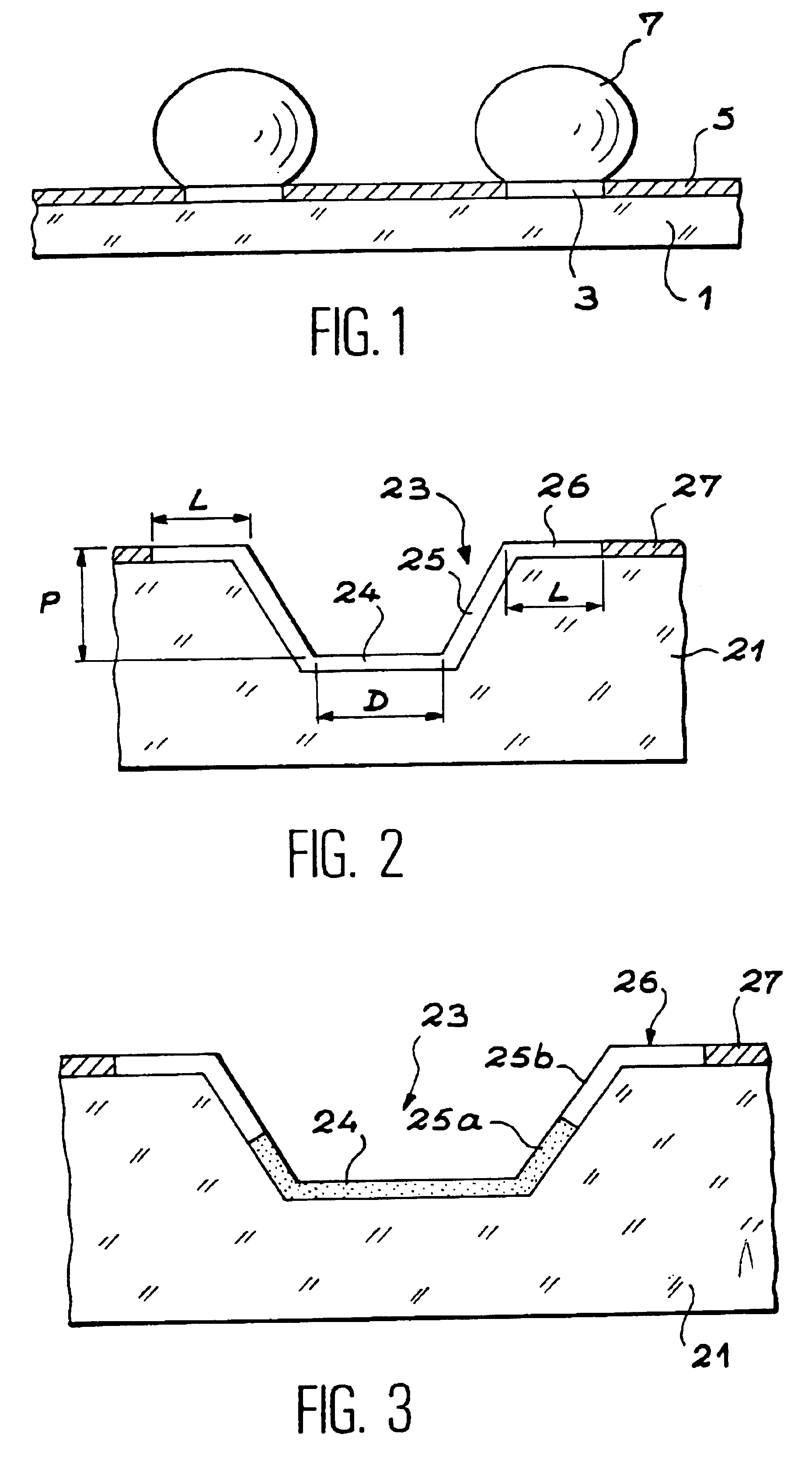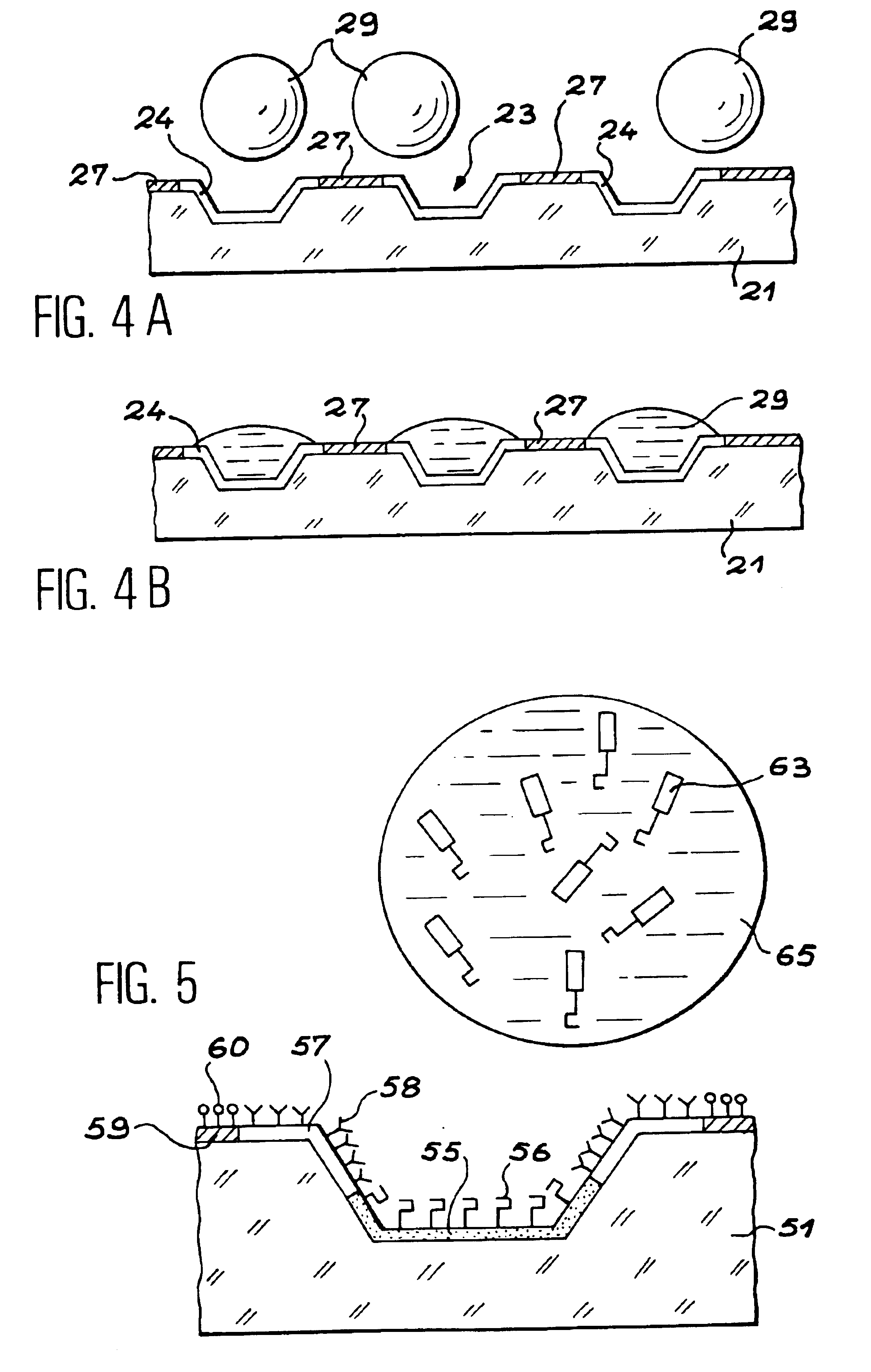Device comprising a plurality of analysis sites on a support
a technology of analysis site and support, which is applied in the direction of biomass after-treatment, laboratory glassware, instruments, etc., can solve the problems of large device limitation, infinite reduction of drop b>7/b>, and very small quantity of reagent after drying
- Summary
- Abstract
- Description
- Claims
- Application Information
AI Technical Summary
Benefits of technology
Problems solved by technology
Method used
Image
Examples
first embodiment
[0093]FIG. 2 shows the device of the invention, in which a single hydrophilic material is used.
[0094]In this figure, carrier 21 can be seen in which the microdishes 23 are hollowed out and have a flattened cone shape whose smaller base corresponds to the bottom 24 of the microdish. In the first embodiment of the invention, bottom parts 24, side walls 25 and the areas of the carrier surface surrounding each microdish, hereinafter called edges 26 of the microdishes, are formed of hydrophilic material, whereas the surface of the carrier located between the edges of the microdishes is formed of hydrophobic material 27.
second embodiment
[0095]FIG. 3 is a diagram of the device of the invention, in which two different hydrophilic materials are used.
[0096]In this figure the same references are used to designate the carrier 21, the microdishes 23 and the areas of hydrophobic material 27. In this case, the bottoms 24 of the microdishes and part of their side walls 25a are made in a first hydrophilic material whereas the remainder of their side walls 25b and the edges 26 are made in a second hydrophilic material. This makes it possible, as will be seen later, to achieve adhesion of the chemical or biological reagent to the bottom of the microdishes.
[0097]In these two embodiments of the device of the invention, the three-dimensional structuring of the carrier leads to obtaining numerous advantages.
[0098]With this structuring it is possible to limit the surface of the reactive sites corresponding to the opening of the microdishes, since the latter are hollowed in the thickness of the carrier and can contain more reagent or...
PUM
| Property | Measurement | Unit |
|---|---|---|
| depth | aaaaa | aaaaa |
| depth | aaaaa | aaaaa |
| depth | aaaaa | aaaaa |
Abstract
Description
Claims
Application Information
 Login to View More
Login to View More - R&D
- Intellectual Property
- Life Sciences
- Materials
- Tech Scout
- Unparalleled Data Quality
- Higher Quality Content
- 60% Fewer Hallucinations
Browse by: Latest US Patents, China's latest patents, Technical Efficacy Thesaurus, Application Domain, Technology Topic, Popular Technical Reports.
© 2025 PatSnap. All rights reserved.Legal|Privacy policy|Modern Slavery Act Transparency Statement|Sitemap|About US| Contact US: help@patsnap.com



